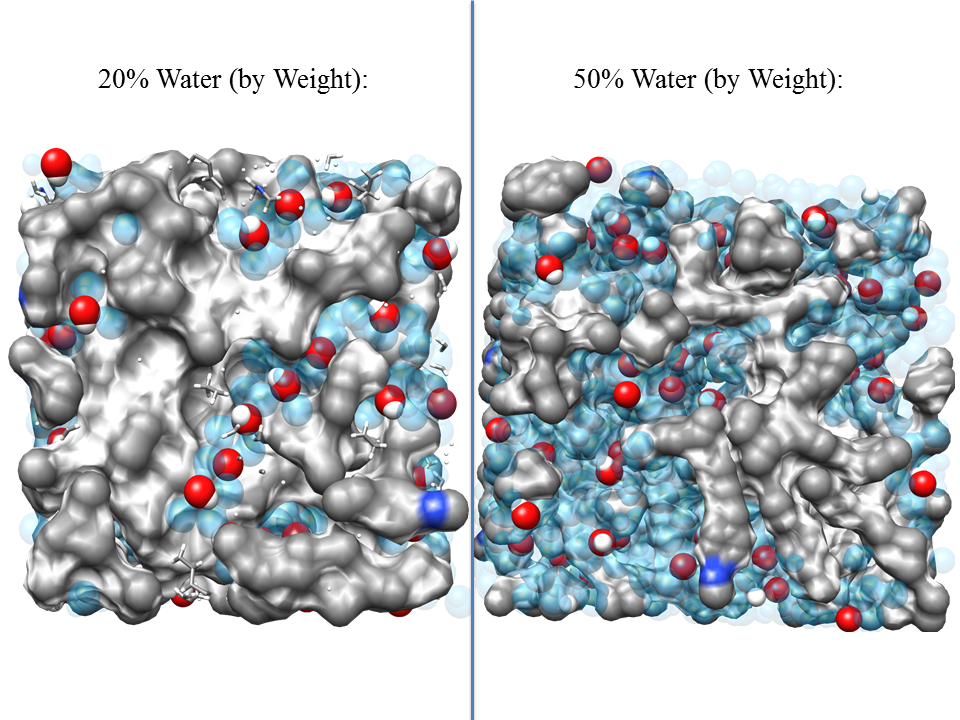Self-assembling membranes for energy applications
Polymer-based materials with nanoscale heterogenieties are considered as charge conducting membranes for various energy related applications, including lithium ion bateries, photovoltaic devices, and fuel cells. Block copolymers and polymer nanocomposites are often considered for this purpose. In these heterogeneous materials, one of the nanoscale domains/phases is responsible for the membrane mechanical stability while the other facilitates charge conduction. Correlation between the underlying structure/morphology of the membrane and its mechanical and transport properties is crucial for efficient design of these materials. However, obtaining a fundamental understanding of these correlations is extremenly complicated due multiscale physics and phenomena that operate in these materials. This is further complicated by the fact that most of the realistic membranes are prepared using solvent evaporation process which leads to formation of kinetically arrested, non-equilibrium morphologies whose structure (and hence properties) strongly depends on processing conditions. Application of multiscale modeling tools that can accurately model phenomena on atomistic scale (inside the domains) as well as predict the overall non-equilibrium morphologies of these membranes provides us unprecedented opportunity to predict properties and optimize the design of these complex materials for application as novel membranes for fuel cells and photovoltaic applications. This work is currently supported by the DOD and the Humboldt Research Foundation.
